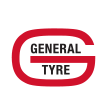
Instead, you would stop depreciating the asset partially through year five, once you had taken $296 in depreciation and reduced the asset’s book value to $1,000. You can calculate an asset’s straight-line QuickBooks ProAdvisor depreciation rate by dividing one by its useful life. For an asset with a five-year useful life, the straight-line depreciation rate is one divided by five, which equals 20%. This approach is reasonable when the utility of an asset is being consumed at a more rapid rate during the early part of its useful life.
- This is done by subtracting the salvage value from the purchase cost of the asset, then dividing it by the useful life of the asset.
- This method falls under the category of accelerated depreciation methods, which means that it front-loads the depreciation expenses, allowing for a larger deduction in the earlier years of an asset’s life.
- First-year depreciation expense is calculated by multiplying the asset’s full cost by the annual rate of depreciation and time factor.
- In the accounting period in which an asset is acquired, the depreciation expense calculation needs to account for the fact that the asset has been available only for a part of the period (partial year).
- This method, being an accelerated method to depreciate an asset, allows for a speedy depreciation.
- Under the straight-line depreciation method, the company would deduct $2,700 per year for 10 years–that is, $30,000 minus $3,000, divided by 10.
What is the formula for double declining balance depreciation?
These financial relationships support our content but do not dictate our recommendations. Our editorial team independently evaluates products based on thousands of hours of research. If the double-declining depreciation rate is 40%, the straight-line rate of depreciation shall be its half, i.e., 20%.
- The depreciation expense calculated by the double declining balance method may, therefore, be greater or less than the units of output method in any given year.
- Our team is ready to learn about your business and guide you to the right solution.
- The depreciation expense will be lower in the later years compared to the straight-line depreciation method.
- The maintenance costs would be deducted from the organization’s reported benefits.
- Common mistakes in applying this formula include overlooking the correct book value, underestimating or overestimating the asset’s useful life, and failing to account for salvage value limits.
- We collaborate with business-to-business vendors, connecting them with potential buyers.
Straight Line Depreciation

One way of accelerating the depreciation expense is the double decline depreciation method. However, accelerated depreciation does not mean that the depreciation expense will also be higher. Instead, the asset will depreciate by the same amount; however, it will be expensed higher in the early years of its useful life. The depreciation expense will be lower in the later years compared to the straight-line depreciation method. If you make estimated quarterly payments, you’re required double declining balance method to predict your income each year.

Sum-of-the-Years’ Digits vs. DDB

The diagram below shows the analysis by year of the declining method depreciation expense. Any asset when subjected to normal use will get subjected to new technology, wear and tear, or unfavorable market conditions, and will result in a reduction to its value. Vehicles, plant machinery, buildings, and more will not last forever and are expected to depreciate until they have reached their salvage value. To fully understand the Double Declining Balance (DDB) method, it’s essential to see how depreciation is calculated year by year with a practical example. As you may imagine, few assets are put into production on the first day of the tax year. As such, most tax systems require that the depreciation for an asset be prorated.
Implementing the double declining balance depreciation method can have implications on a business’s cash flow and planning. While the DDB method does not directly impact cash flow, the lower taxable income in the early years can result in lower tax liabilities, effectively improving the company’s cash position. However, it is crucial for businesses to account for the eventual reversal of this cash flow advantage, retained earnings as taxable income will increase in later years.


